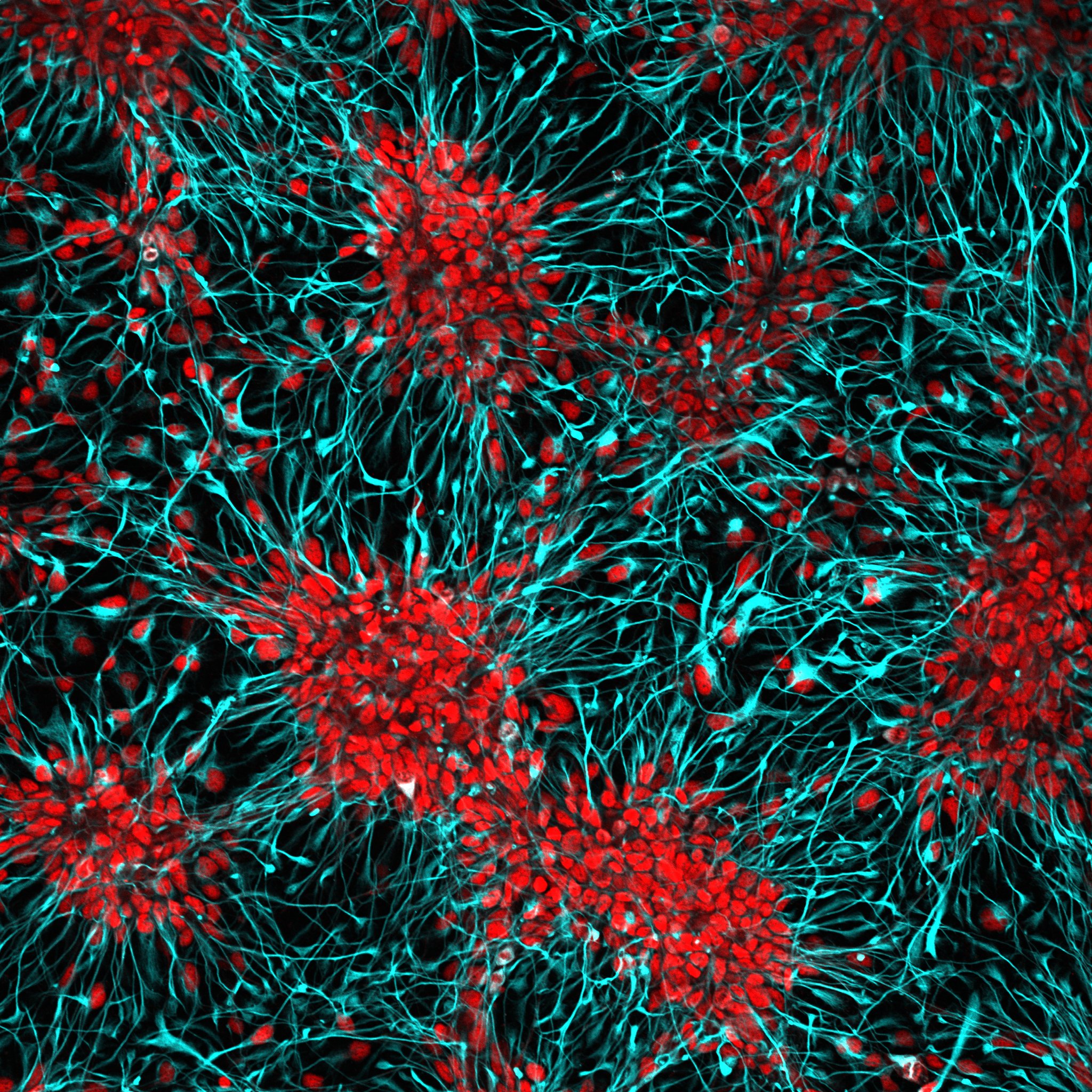Researchers are gaining insights into how schizophrenia develops by studying the strongest known genetic risk factor. When a small portion of chromosome 3 is missing, called 3q29 deletion syndrome, it increases the risk for schizophrenia by about 40-fold.
By analyzing how patterns of altered gene activity overlap in two models of 3q29 deletion syndrome — in mice and in human brain organoids — scientists have spotted an unexpected change in brain cells: impaired mitochondrial function.
The findings converge with work on another genetic risk factor for schizophrenia, 22q11 deletion syndrome or DiGeorge syndrome, which has also been found to involve disrupted mitochondrial function.
The results are published in Science Advances.
“For genetic variants associated with schizophrenia, we want to understand the primary pathology at the cellular level,” says co-lead author Ryan Purcell, PhD, assistant professor of cell biology at Emory University School of Medicine. “This gives us a foothold, which may help cut through schizophrenia’s polygenic complexity and better understand the neurobiology.”
The research came out of a collaboration between researchers at Emory and Rutgers. At Emory, the collaboration included the laboratories of co-senior author Gary Bassell, PhD; Steven Sloan, PhD; and Victor Faundez MD, PhD. The co-lead author is Emory postdoctoral fellow Esra Sefik, PhD, now at Princeton.
Co-senior author Jennifer Mulle, PhD, and colleagues first showed that 3q29 deletion was a risk factor for schizophrenia in 2010. Previously at Emory, Mulle is associate professor of psychiatry, neuroscience and cell biology at Rutgers.
“Our data give strong support to the hypothesis that mitochondrial dysregulation is a contributor to the development of schizophrenia,” Mulle says. “The interplay between mitochondrial dynamics and neuronal maturation is an important area for additional detailed and rigorous study.”
3q29 deletion syndrome has an estimated prevalence of about 1 in 30,000. In addition to increasing the risk for schizophrenia, 3q29 deletion can include intellectual disability, autism spectrum disorder and congenital heart defects. The effect of 3q29 deletion on schizophrenia risk is more than any single known gene variant, but the contributions of individual genes within the deletion are still being unraveled.
The finding that various schizophrenia-associated chromosomal deletions converge on mitochondria runs counter to an expectation in the field that such mutations should alter proteins engaged in synapses: the connections between neurons. However, mitochondria are critical for energy-hungry synapses’ function — so these models may not be in conflict. Further work is needed to know whether mitochondria at synapses are particularly vulnerable, Bassell says.

Neural progenitor cells used to study the downstream effects of 3q29.
Ryan Purcell
Mitochondria are found in every cell — they consume oxygen to produce energy in the form of ATP (adenosine triphosphate). Mitochondria have their own genomes, but most of the proteins found inside them are encoded by genes in the cell’s nucleus.
As a result of altered mitochondrial function, 3q29 cells lack metabolic flexibility, meaning that they have difficulty adapting to changes in sources of energy. This may interfere with neuronal development, because maturing neurons need to switch to relying more on mitochondria for energy as they differentiate.
Supported by a recently awarded grant, Purcell is now assessing whether cells from people with 22q11 also display the same metabolic inflexibility.
“Eventually, we want to understand which cellular changes like these are linked to specific clinical outcomes, which could help in designing more effective therapeutic strategies,” Purcell says.
The results reported in Science Advances illustrate how 3q29 deletion affects the whole body, not just the brain; the effects on mitochondria are seen in kidney cells as well as in brain cells. Individuals with 3q29 deletion syndrome also tend to be smaller in size than typical, possibly because of altered fat metabolism.
The research was supported by the Brain & Behavior Research Foundation and the National Institute of Mental Health (F32MH124273, R56MH116994, R01MH110701, R01MH118534), along with the Georgia Clinical & Translational Science Alliance, an I3 (Imagine, Innovate and Innovate) grant from the Emory University School of Medicine and a gift from the Woodruff Fund.

